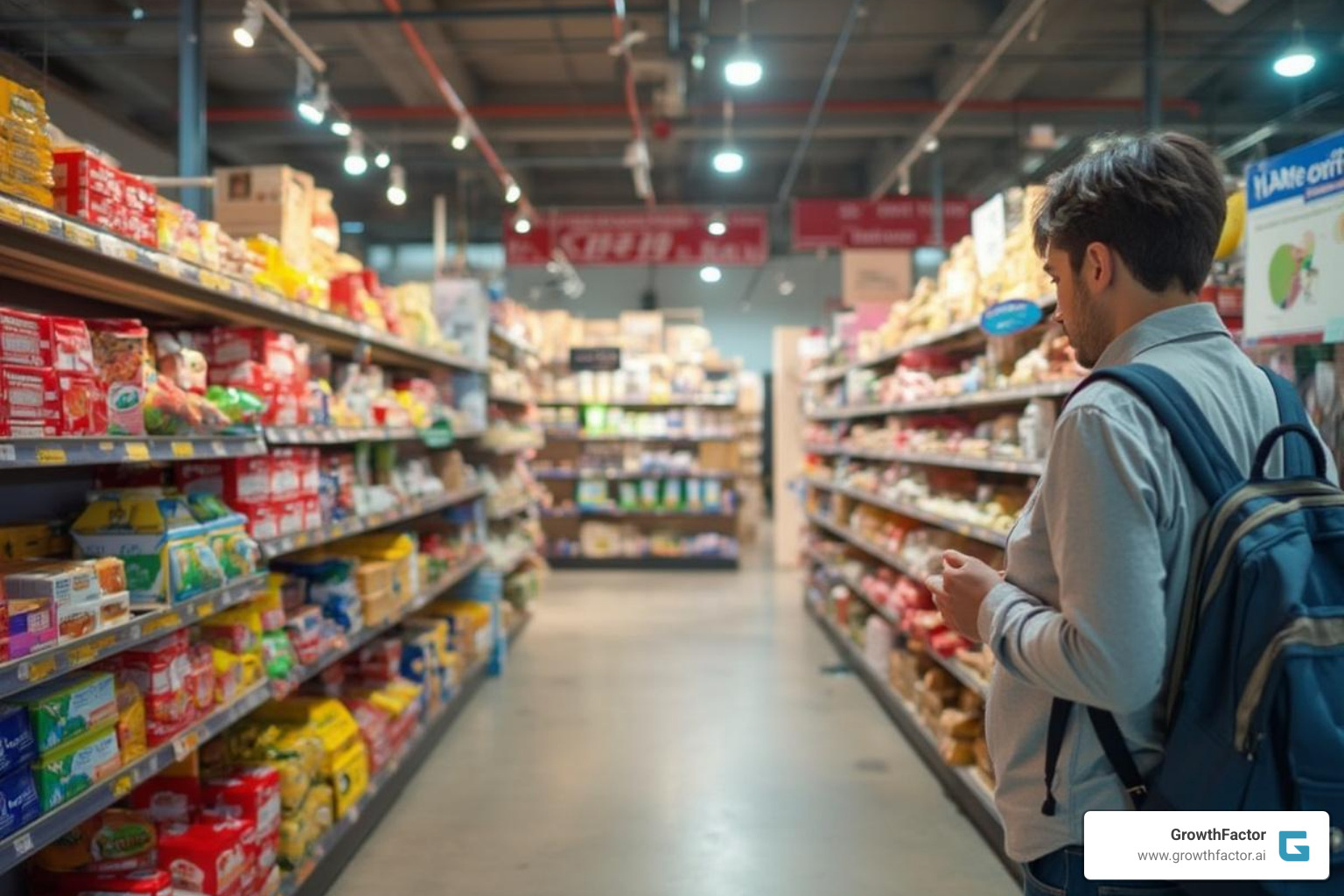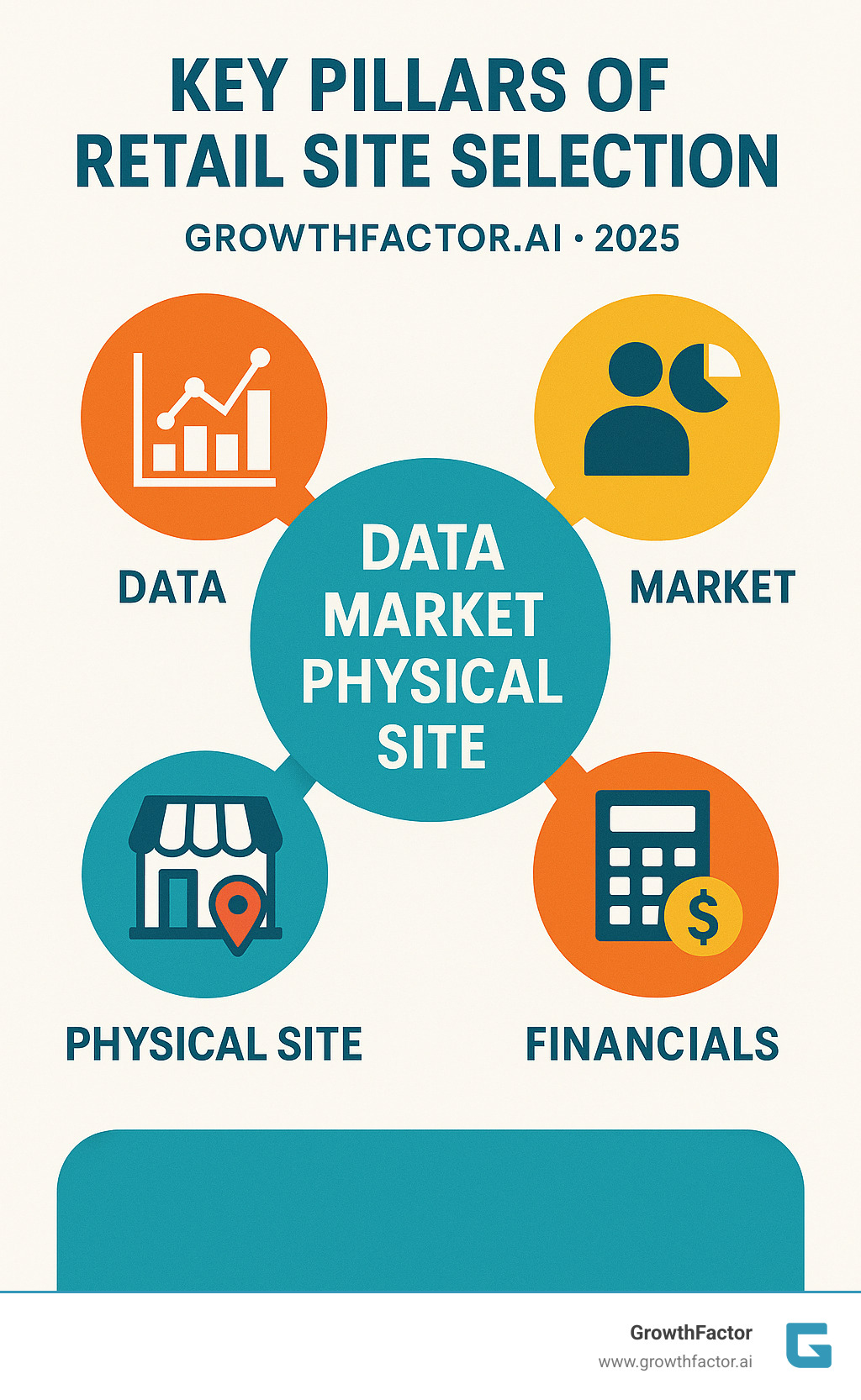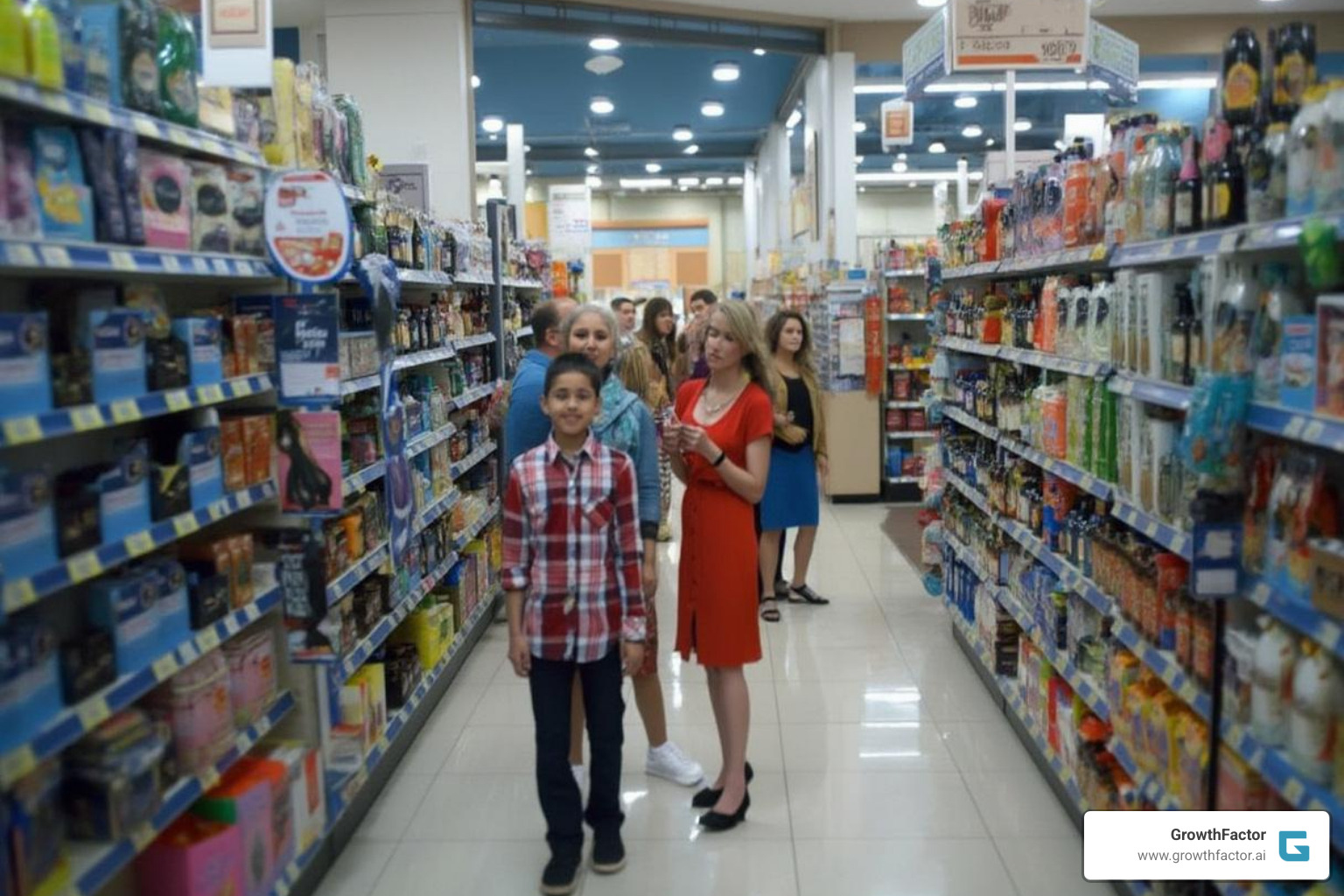Criteria for Success: Mastering Retail Site Selection
Written by: Clyde Christian Anderson
The Enduring Importance of a Physical Storefront

Building a successful retail business hinges on retail site analysis—the strategic process of finding and evaluating the best possible location for a new store. Despite the growth of e-commerce, physical stores remain dominant. In-store sales account for 82% of retail sales in the United States, underscoring why the right location is crucial for foot traffic, sales, and brand visibility. A poor choice can doom a business from the start.
Effective retail site analysis involves a multi-faceted approach, considering:
- Customer demographics and behaviors
- The competitive landscape and neighboring businesses
- Site accessibility, traffic patterns, and visibility
- Comprehensive costs beyond rent, including taxes and build-outs
- Local zoning laws and regulations
- Supply chain and logistics efficiency
My name is Clyde Christian Anderson, Founder and CEO of GrowthFactor.ai. With a background in investment banking and retail, I've dedicated my career to making advanced retail site analysis accessible for growing retailers. Let's explore how you can master this vital process.

The Core Framework for Comprehensive Retail Site Analysis
Understanding Your Customer: Demographics and Psychographics
Before considering a location, you must deeply understand your target audience. This involves analyzing both demographics (the "who": age, income, population density) and psychographics (the "why": values, lifestyles, interests). For example, a pharmacy might analyze population density, per capita income, and local infrastructure to gauge community healthcare needs.
We start by analyzing data from your existing successful locations to understand what makes them work. By identifying the spending habits and preferences of current customers, we can build "customer personas." We then use Geographic Information Systems (GIS) to find new markets where these personas are concentrated. This data-driven approach ensures the chosen site aligns with your target market, moving beyond intuition to informed decisions.
Analyzing the Competitive and Co-Tenant Landscape
Next, retail site analysis requires understanding the local business ecosystem. This means evaluating both direct competitors and potential neighbors.
Competition analysis isn't just about counting nearby rivals; it's about understanding their performance and market influence. The goal is to find a balance—too much competition can indicate a saturated market, while too little might signal low demand. This analysis helps identify market gaps where your business can thrive.
Equally important are co-tenants. Strong anchor tenants, like a popular supermarket, can significantly boost foot traffic for an entire shopping center. Complementary businesses, such as a juice bar near a gym, create a synergy that drives sales for both. We also use "Void Analysis" to identify suitable co-tenants for vacancies, ensuring a harmonious retail environment. A great location in a poorly performing mall is still a bad choice.
Evaluating Site Accessibility, Visibility, and Regulations
With a potential market identified, we zoom in on the specific site's physical and legal attributes.
High foot and vehicular traffic are essential for attracting customers. A store's visibility from main roads can significantly increase walk-ins. However, accessibility is just as crucial. The site must be easy to reach via main roads and public transit, with ample parking. We use drive-time analysis, which is more accurate than simple mileage rings, to define a store's realistic catchment area. An in-person site survey is vital to confirm these factors, as maps can't reveal blocked views or difficult access.
Finally, compliance with local zoning regulations is non-negotiable. These laws dictate what types of businesses can operate in an area, building specifications, signage rules, and public access standards. Overlooking these can lead to costly delays or prevent a store from opening altogether.
Aligning Financials and Strategy for Long-Term Success
The final piece of the framework is ensuring the site's financial viability and strategic fit.
Financial analysis must go beyond rent. A comprehensive cost assessment includes:
- Rent/Lease Expenses
- Taxes and CAM (Common Area Maintenance) Charges
- Build-out and Renovation Costs
- Utilities, Maintenance, and Staffing Costs
- Logistics and Transportation Costs, which can be several times higher than real estate expenses.
Here's a simplified cost comparison:
| Cost Category | Description | Typical Impact |
|---|---|---|
| Rent | Base cost for the physical space. | Direct monthly expense. |
| Taxes | Local property taxes. | Varies by municipality; can be substantial. |
| CAM (Common Area M.) | Fees for shared amenities/maintenance. | Adds to monthly occupancy cost. |
| Build-out/Renovation | Customizing the interior to brand standards. | Significant upfront capital expenditure. |
| Utilities | Electricity, water, gas, internet. | Ongoing operational expense; varies with usage. |
In today's market, a physical store must also support an omnichannel strategy. It can function as a pickup point for online orders (BOPIS), a hub for local delivery, and a mini-warehouse for e-commerce fulfillment. Every site selection decision must align with long-term business goals like revenue growth, market expansion, and customer satisfaction. A site that doesn't support your brand's vision is not the right fit.
Leveraging Technology to Make Winning Decisions
Choosing a retail location once relied on gut feelings and basic data. Today, retail site analysis has been transformed by technology, turning a subjective art into a data-driven science. Advanced software enables smarter, faster decisions, reduces risk, and provides deep insights into customer behavior and market conditions, turning raw data into actionable intelligence.

The Role of Technology in Modern Retail Site Analysis
Several key technologies power modern site selection:
- Geospatial Data (GIS): GIS acts as a super-powered map, visualizing data like population density, income levels, and competitor locations. This turns complex datasets into clear visuals, helping to pinpoint optimal trade areas.
- POI (Point of Interest) Data: This data identifies nearby businesses, landmarks, and high-traffic zones. It helps map competitors, find complementary businesses, and understand the local commercial landscape.
- Predictive Analytics, AI, and Machine Learning: This is the future of site analysis. Predictive analytics forecasts outcomes like sales or foot traffic. AI and Machine Learning (ML) take it further, learning from vast datasets to spot complex patterns and make highly accurate predictions. Our AI Agent, Waldo, exemplifies this by rapidly evaluating potential sites.
- Mobile Location Data: This provides real-time insights into how people move through a trade area. It helps verify foot traffic patterns and confirm that people passing a potential site match your ideal customer profile.
By integrating these technologies, we gain a comprehensive view of a site's potential. GrowthFactor's AI-improved platform automates the qualification and evaluation steps, allowing teams to assess far more sites with greater efficiency.
From Data to Decision: Future-Proofing Your Location Strategy
While technology is powerful, it doesn't replace business acumen and on-the-ground validation. Data models can't capture every nuance of a local market.
A future-proof strategy combines quantitative data with qualitative insights. We always pair our analysis with ground-truthing—visiting sites to observe traffic, check visibility, and understand the local environment. A site that looks perfect on a map might have hidden access issues.
The ultimate goal is to ensure your chosen location aligns with your long-term business objectives for sustainable growth, brand building, and operational efficiency. Does the location support your expansion plans and brand image? Will it remain relevant as consumer habits evolve?
At GrowthFactor, our AI-powered platform is built to empower you. Our AI Agent Waldo streamlines the site selection process, enabling you to evaluate five times more sites efficiently. By automating key steps, we help you remove assumptions and make confident decisions, ensuring your next retail location is the right fit for long-term success. We offer flexible plans to fit your needs, starting with our Core plan at $500, Growth at $1,500, and Enterprise plans also available.
Find how AI transforms retail site selection for brands: https://www.growthfactor.ai/solutions/by-industry/for-retail-brands
Citations
The human algorithm
Request Your demo
Schedule meeting
Or submit your information below and we'll be in touch to schedule.


